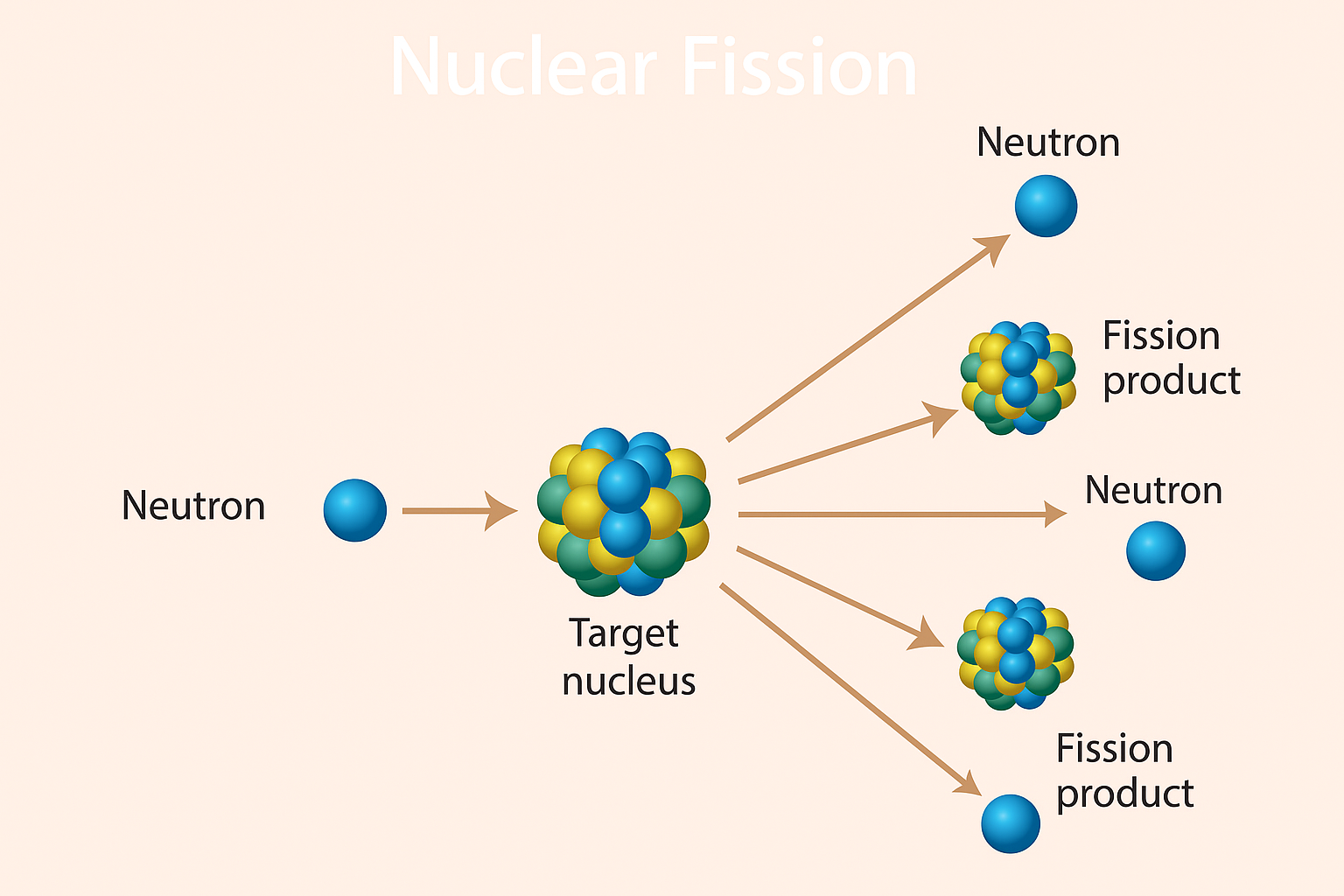🔬 Nuclear Fission: A Chain Reaction Explained
Nuclear fission is a fundamental process in nuclear physics and is central to how nuclear power and atomic bombs work. This reaction occurs when a heavy nucleus splits into smaller nuclei, releasing a significant amount of energy and additional neutrons. Understanding nuclear fission is essential for exams like the MCAT and for grasping basic principles of atomic interactions.
🧠 What is Nuclear Fission?
Nuclear fission happens when a neutron collides with a heavy atomic nucleus (such as Uranium-235), causing it to become unstable. The nucleus splits into two or more lighter nuclei, called fission products, and releases:
Energy (in the form of kinetic energy and gamma rays)
More neutrons, which can go on to cause more fission reactions (chain reaction)
This process is harnessed in nuclear power plants for electricity generation and is also the principle behind nuclear weapons.
📊 Breakdown of the Nuclear Fission Process
| Component | Description |
|---|---|
| Neutron (Initial) | Initiates the reaction by colliding with a target nucleus. |
| Target Nucleus | Heavy atomic nucleus (e.g., Uranium-235) that undergoes fission upon neutron impact. |
| Fission Products | Two or more lighter nuclei released after the fission process. |
| Released Neutrons | Additional neutrons emitted which can initiate further fission reactions (chain reaction). |
🎯 Why It Matters for the MCAT
On the MCAT, you may encounter questions involving:
Energy release during nuclear reactions
Subatomic particle behavior
Chain reactions and radioactive decay
Familiarity with the fission process and its components will prepare you to tackle questions involving nuclear physics and its biological implications.
📥 Call to Action
Want to master tough MCAT concepts faster? 🎯
Try King of the Curve MCAT Prep for gamified question banks, custom quizzes, and high-yield science animations!
👉 Download the app now
🧾 Summary
Nuclear fission is the splitting of a heavy nucleus into lighter nuclei.
It releases energy and neutrons, which can start a chain reaction.
Essential for understanding nuclear energy, atomic structure, and MCAT physics content.
Frequently Asked Questions (FAQs)
-
Aim for 4-6 focused hours, ensuring you incorporate breaks to avoid burnout.
-
Practice mindfulness techniques, take practice exams under realistic conditions, and maintain a balanced lifestyle.
-
Set short-term goals, seek support from mentors, and reward yourself for small achievements.
-
Regular exercise improves focus, reduces stress, and enhances overall mental clarity.
-
KOTC offers personalized learning tools, gamification features, and adaptive question banks to help students stay on track without burnout.


